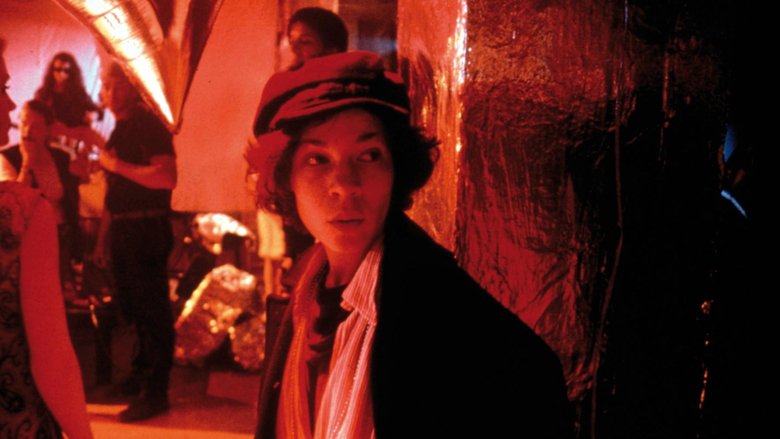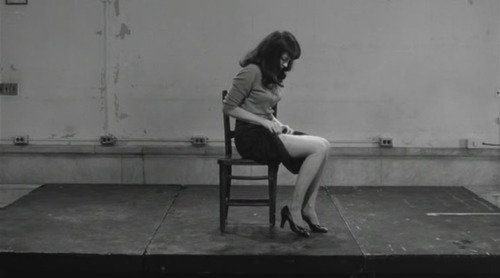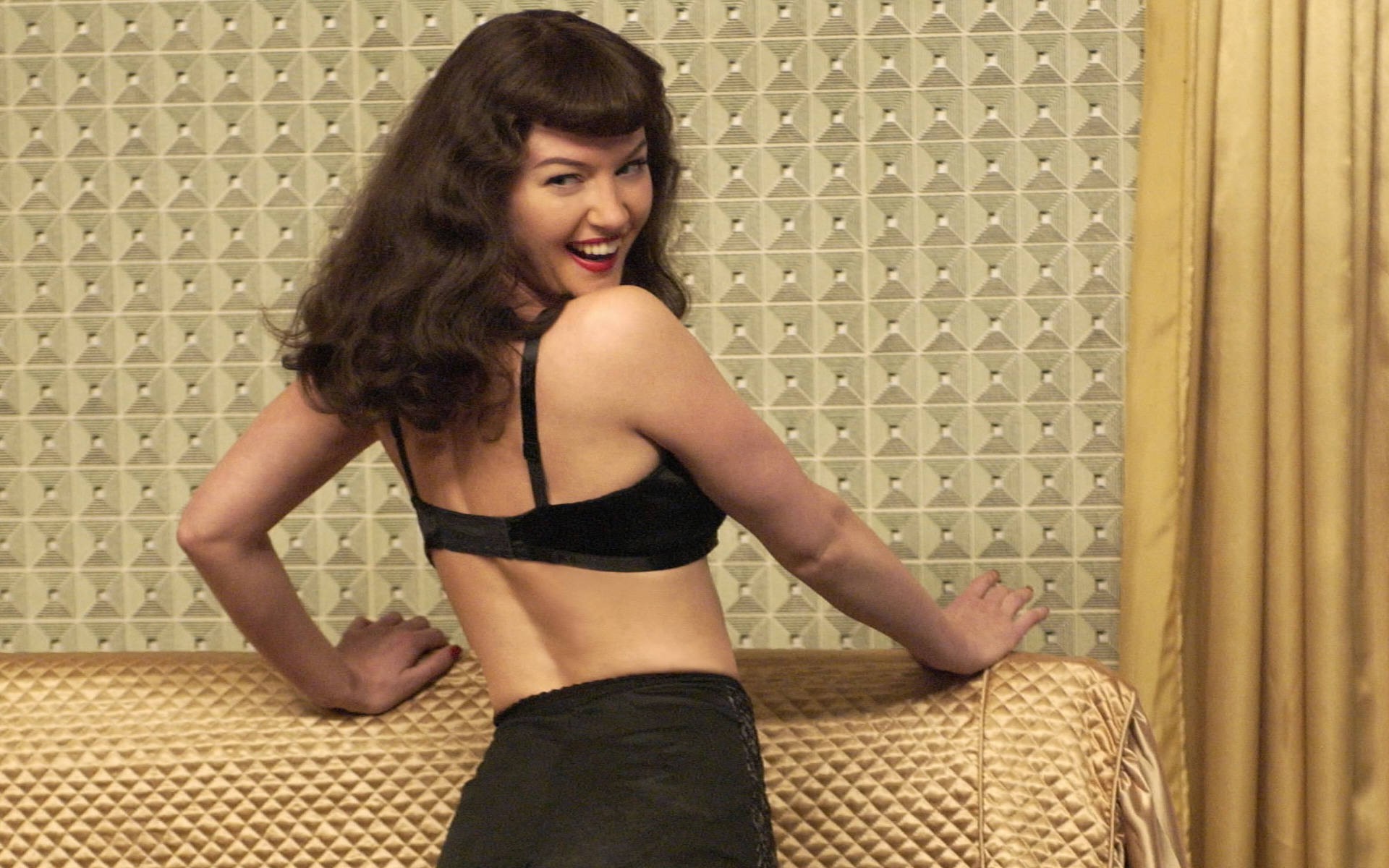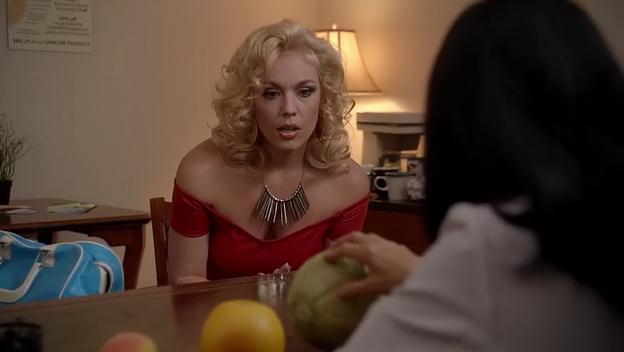
This post by staff writer Elizabeth Kiy appears as part of our theme week on Women Directors.
I’ve always thought Mary Harron’s work was the perfect example of why we need female directors.
I think the films she produces provide a perspective we would never see in a world unilaterally controlled by male filmmakers. Harron appears to specialize in off-beat character studies of the types of people a male director may not gravitate towards, nor treat with appropriate gravitas. She treats us to humanizing takes on sex workers and sex symbols, angry lesbians and radical feminism and makes them hard to turn away from.
Her work is so different from what we are used to that, it’s usually depressing to read anything about the making of her films, which always seem to struggle for financing and spend years in development hell.
Harron’s film are like long monologues, focusing on the experiences of a single, larger than life character. In my head, I’ve compared them to less glossy magazine profiles.
Though she is best know for her controversial take on American Psycho (which starred Gloria Steinem’s stepson, Christian Bale), I find her biopics, a triptych focusing on Bettie Page, Valerie Solanas, Anna Nicole Smith, her most interesting works.
These are difficult women to portray in an even handed fashion. Their personas and actions have transcended the truth of who they are and in the cases of Bettie and Anna Nicole, tend to be seen rather than heard. They are also women who have appeared difficult to defend and explain from within a feminist framework.
Harron, who wrote for Punk Magazine in 1970s New York, mixes feminine aesthetics and masculine grit to find beauty in the often ugly experiences of her subjects. She takes daring subjects and portrays them in a formalistically unique style, using different film stocks, gorgeous cinematography and fast kinetic edits to portray different time periods. The Notorious Bettie Page, uses a Wizard of Oz style switch from black and white to lush colour, to portray the character’s feelings of freedom. She lets her actors breathe and inhabit the characters and when her films succeed, they do on the lead character’s stand out performances.
Though it is often unclear what she is trying to say with them. As a whole, her oeuvre does not present a cohesive sense of auterusim or even stick to a specific genre, medium or perspective. Harron’s main interest appear to be intriguing stories.
If her films do have one message, it’s that people are more complicated than we assume. They don’t make a snap judgement about the characters. Mary Harron doesn’t tell us Valerie Solanas was “crazy” or Bettie Page was exploited or Anna Nicole Smith was a gold digger. She says, there are good and bad parts of everyone. What seems to matter is being interesting.
I Shot Andy Warhol (1996)
I Shot Andy Warhol is a little art scene movie about Valerie Solanas (Lili Taylor), a lesbian writer famous more for the delusions that lead her to (non-fatally) shoot Andy Warhol in 1968 than for her feminist treatise, the S.C.U.M. manifesto (Society for Cutting Up Men).
The film is Valerie’s show, portraying her as a desperate person living on the fringes of society and struggling to make a living, who comes face to face with Warhol’s beautiful world and its superstars and hopes to be invited in. She comes to believe Warhol is trying to control and exploit her when she cannot get him to produce a play of hers.
The film doesn’t seem to take a stance on Solanas, but allows the audience to try to understand her based on what they have been shown. We are helped along by Taylor’s performance, intense to the point of being frightening, which makes her character come alive.
The Notorious Bettie Page (2005)
In Harron’s portrayal of the life of 50s pin-up Queen, Bettie Page (Gretchen Mol), we meet a woman who is a living contradiction. She is portrayed as an innocent who doesn’t understand the idea of pornography yet enjoys posing naked. Even the most aggressive bondage scenes where she is tied up and gagged seem to be a great game for her.
Though the film is about pornography, Harron skillfully avoids giving us overtly sexualized or salivating gazes of her star. The nude scenes are either awkward as Bettie fumbles unsure in the beginning or triumphant in portraying Bettie’s proud nudism and her sun-kissed body, glowing. I think Gretchen Mol’s portrayal of Bettie really helps here; she is wide-eyed and perpetually stunned. The way she inhabits the character makes her sexuality seem natural. She enjoys her body and the film’s switch to technicolor emphasizes that happiness.
However, it’s a film with a lot to unpack. Because Harron opens it with scenes of Bettie’s rape and abuse, it’s easy to believe she’s suggesting Bettie’s sexual openness is because of her rape. It’s gets slightly heavy-handed in one point where she is invited to show a private moment in her acting class and she begins to take off her clothes.
The relatively short span of Bettie’s life Harron focuses on cuts out her later mental illness and the extent of her evangelicalism. It’s discomforting to see younger Bettie enjoy her work when contrasted to older Bettie whose conversion suggests she begins to view what she participated in as exploitative.
The Anna Nicole Story (2013)
The Anna Nicole Story is a Lifetime movie, it’s campy and trashy, but it has aspirations. Harron gives Anna Nicole the Marilyn Monroe treatment, telling us that she is a misunderstood bombshell hiding a deep sadness. Though, the device of the ghostly figure of an older glamorous Anna Nicole guiding her through her life is a bit much.
There’s a fine line between campy trashy and exploitation trashy and Harron is fairly successful here. For the last years of her life, evidence that Anna Nicole Smith was mentally unwell and struggling with drugs was turned into a joke and her weight gain was excoriated by men who just wanted her to get hot again. While Anna Nicole was various exploited and exploitative herself, the film tries to rein in her image to something palatable to the viewers at home. Agnes Bruckner tries to make her seem human, but though we are left unsure of the motivations behind many of her stranger actions.
It seemed like every interview Bruckner did for the film was about the enlarged breasts she sported as Anna Nicole. She was asked “How were they made? or “How did they feel?” over and over.
In the finished picture, too much fun is had with Anna Nicole’s breasts, whose size the film enjoys exaggerating and displaying, though this may come with the territory. The scene where she bring cantaloupes to display the size of implants she want is played for laughs, as is the revel of her new large breasts getting her attention at the strip club.
As it’s a Lifetime movie, Harron is hampered by a PG rating, a low budget and shot production schedule, but she still gives us something interesting to explore.
She always has.
Elizabeth Kiy. is a Canadian writer and journalist living in Toronto, Ontario. Someday she will take over the world.











